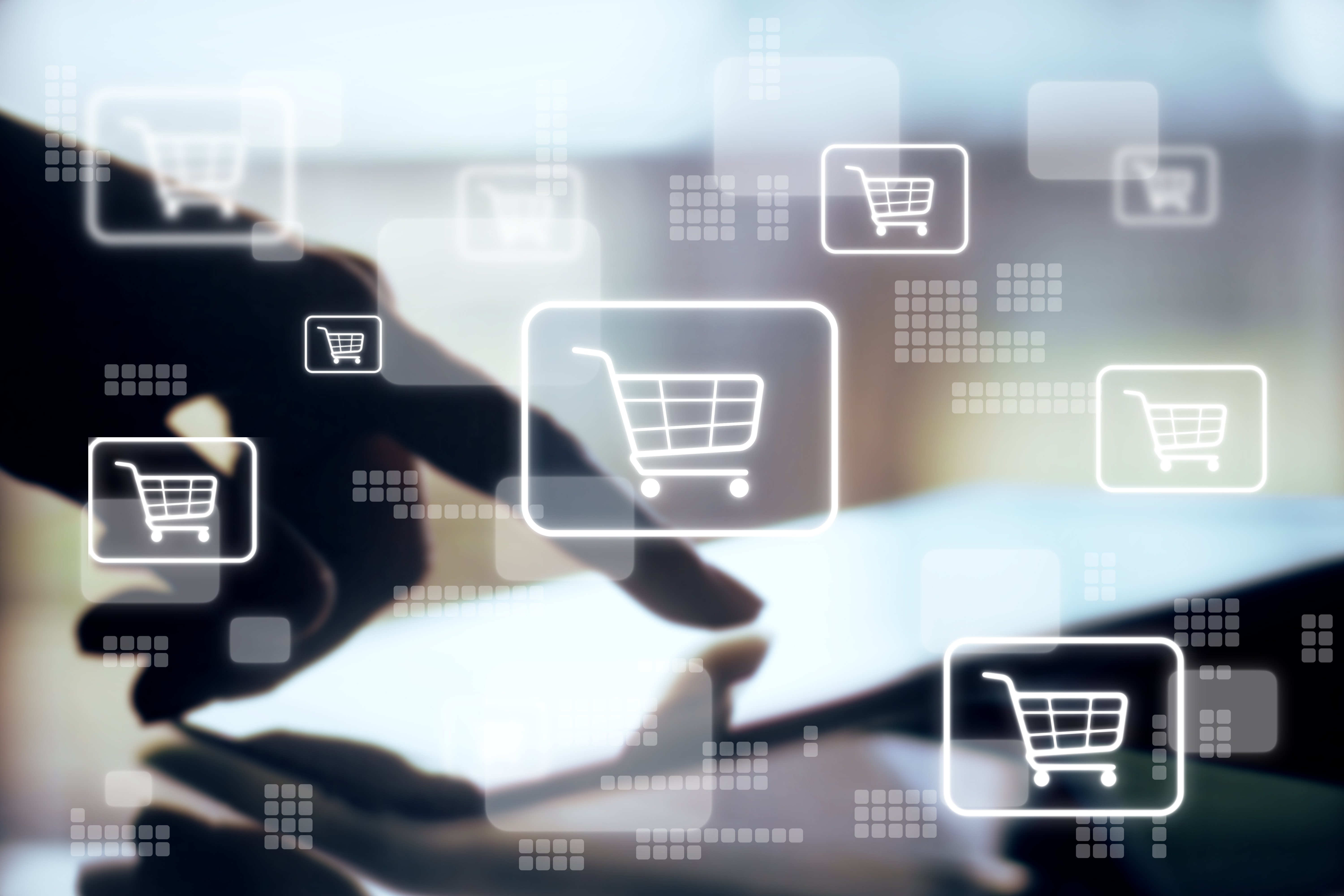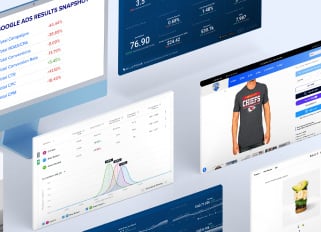
Commerce Chronicles - Omnichannel vs Multichannel: Where Are E-commerce Brands Doubling Down in 2025?
Back in the day, we used to ask, “What channels should I sell on?” Today, it’s more like “How do I make these channels work together?”
Omnichannel isn’t just a buzzword; it’s the line between sustainability and platform dependence. Our latest Commerce Chronicles survey highlighted a clear gap between multichannel and omnichannel. Yes, many operators are selling across multiple touchpoints, but some have systems that still operate in silos.
Without further ado, let’s unpack what omnichannel is (and isn’t) and break down the main questions:
-
Am I building a brand or just feeding the marketplaces?
-
Which channel actually drives profit, not just traffic?
-
Are my tools making me smarter or just busier?
-
What’s the real cost of selling everywhere at once?
-
Is it time to double down or finally diversify?
By the end of this Commerce Chronicles article, you’ll have learned whether you have an omnichannel or multichannel strategy, and how you can improve it.![]()
Key Differences Between Multichannel and Omnichannel Marketing
First, let’s get something straight…
Multichannel means you sell in multiple places.
Omnichannel means those places talk to each other.
Why does this difference matter?
Well, 80% of consumers use multiple channels before making a purchase. On top of that, potential customers on average need 7 hours of content consumed, across 11 touchpoints, in 4 different locations.
So the need to have a multichannel strategy is there.
However, a multichannel strategy isn’t enough because if these channels aren’t sharing data, you’re likely to be missing out on opportunities to retarget and move prospects further down the funnel.
Omnichannel marketing works by unifying sales channels, synchronizing inventory management, and meeting customer expectations..
Instead of moving mindlessly on each channel, an omnichannel strategy allows you to learn:
-
which touchpoint a customer came from
-
what they browsed
-
and how to reengage them (whether through SMS, email, or in-store checkout).
In contrast, a multichannel approach or strategy uses multiple channels to reach different potential customer segments. However, without consolidated data, the experience can be inefficient, no matter how present you are.
Omnichannel requires more than presence; it demands integration, insight, and internal alignment. The problem? Most e-commerce systems simply aren’t built for that level of cohesion.
How Does Omnichannel Marketing Improve The Customer Experience?
By integrating online and offline touchpoints (such as mobile shopping, social media platforms, and physical stores), omnichannel marketing creates a seamless shopping experience. Shoppers can browse online, check stock in a local store, and pick up or return items in person, all while feeling like one brand experience.
Revenue Hotspots: Who’s Actually Driving the Sale?
When we asked operators where they generate the majority of their sales:
-
60% said Marketplaces
-
20% said Marketplaces + Retail Dropship
-
And 20% said Retail
…with 0% attributing their website as their sole source.
In other words, most brands still rely on rented channels for revenue and then use DTC to build brand equity and retention. This strategy is excellent, provided these channels actually communicate with each other, and you’re using data from marketplaces to optimize your website.
Monil Kothari, Founder of Haus of Brilliance, explained: “By being spread across channels, the 'bad' moments like losing a retailer or when a marketplace makes a sudden change don’t sink the business.”
Jasmin Wigmore, Marketing Manager at Dermaworks, agreed: “It’s good not to have all your eggs in one basket.”
What is Direct-to-Consumer (DTC) and How Does Omnichannel Supercharge It?
Direct-to-consumer (DTC) means you sell directly to your customers. This means no middlemen or marketplaces taking a cut, and no algorithms deciding who sees your products. It’s your website, your online store, your audience, your data.
The benefit? Control.
You own the customer relationship: their email, purchase history, and repeat potential. You can retarget them, build loyalty programs, and raise their lifetime value without paying rent to Amazon or Walmart.
BlueTuskr Insight…
An omnichannel strategy turns DTC into a powerhouse.
Sure, you can implement a multichannel strategy and be in multiple places; however, you’ll be leaving thousands on the table by not retargeting and driving traffic back to your website.
Marketplaces should be your testing lab. DTC should be your profit engine. Instead of asking “Should I sell on Amazon or my site?”… ask yourself this: “How do I make Amazon work for my site?”
What Role do Brick-and-Mortar Stores Play in Omnichannel Retail?
In omnichannel retail, brick-and-mortar stores become part of the digital ecosystem. They’re no longer just sales locations; they’re experiential hubs that support customer acquisition, loyalty, and retention. Many brands use stores as fulfillment centers, event spaces, or service hubs that enhance the overall customer journey.
The Tech Stack and Customer Data That Keep It All Together
When we asked respondents what tools, platforms, or partnerships helped them manage multiple channels, here’s what they said:
-
67% rely on the Shopify ecosystem: Shopify, Shopify POS, Omnisend, Multiorders, Finaloop
-
17% use enterprise integrations: Cin7, Mirakl, Rithum
-
17% still manage operations manually or with minimal automation
In commerce, technology has always promised to make things easier. But as our toolkits expand (Shopify, Finaloop, Omnisend, Cin7, Mirakl), the real challenge isn’t collecting tools…
It’s connecting them.
This is where omnichannel truly differs from multichannel. Multichannel means being everywhere, while omnichannel means making everything work together.
For instance, a Shopify order triggers a personalized follow-up via Omnisend. In-store POS data informs your online retargeting. And instead of juggling five dashboards, you’re reading one unified narrative of customer behavior.
Simply put, it’s not about how many places you sell; it’s about how well each one works with the next. The strongest brands treat their tech stack like an ecosystem, not a warehouse.
BlueTuskr Insight…
Here’s how to stop collecting tools and start connecting them (because integration is the new inventory after all).
-
Audit your stack: List every tool and where data stops flowing.
-
Pick a hub: Centralize your customer + order data (CRM, ERP, or Shopify).
-
Cut redundancies: One tool per function…no overlap.
-
Automate handoffs: Link inventory, marketing, and support to trigger actions automatically.
-
Track ROI: Measure time saved and faster decision-making.
And voilà. There you have it: the difference between a business that’s being run by tools and one where the tools are running for you.
But Why is the Customer so Important in an Omnichannel Strategy? Customer data is the foundation of any successful omnichannel marketing strategy. It helps brands understand where shoppers interact, what influences their decisions, and how to improve their satisfaction. When used ethically, this data informs product recommendations, loyalty programs, and targeted marketing efforts across all marketing channels.
Hard-Earned Lessons from Real Operators
When asked what they’d learned (good or bad) about managing multiple channels, three themes emerged:
-
50% emphasized automation and visibility as critical
-
33% focused on diversification as risk protection
-
17% warned about data fragmentation
For Monil Kothari, at Haus of Brilliance, managing multiple channels isn’t optional; it’s protection.
“What I’ve learned is that having a healthy mix of marketplaces, retail, and D2C is the best way to future-proof a brand. For Haus of Brilliance, this approach has given us scale, legitimacy, and reach while also protecting us from being too dependent on any single partner.”
And if diversification builds resilience, automation builds rhythm.
“You really need automation to keep track of levels and price changes regularly when you are selling over multiple channels”, said Phil Coles, Owner of Coolandnew.
Why?
Well, Sean McCoy, SEO Sherpa at Chromcraft Home, summed up the stakes:
“Poor reporting leads to inventory overrun, but that is better than a single stockout! Channels wield tremendous punitive power to protect their reputation from a vendor daring to cancel a customer's order.”
Automation isn’t about efficiency anymore. It’s what turns data from a liability into a safeguard in an omnichannel strategy.
BlueTuskr Insight…
Omnichannel isn’t an expansion strategy…it’s a control strategy. What we mean by that is you don’t go wider to chase more sales; you go smarter to prevent lost ones.
Automation, unified dashboards, and clean attribution aren’t a“nice to have”; they’re the scaffolding holding your entire business upright.
Emerging Trends and Where the Industry’s Headed Next
Looking ahead, operators aren’t chasing more channels; they’re improving the ones that matter. When asked where they plan to invest next year, responses revealed a shift from expansion to optimization:
-
33% plan to double down on their own site.
-
33% are balancing marketplaces and DTC equally.
-
17% aim to diversify further, but simplify their tech stack.
-
17% are expanding hybrid retail and online models.
For many, the future isn’t about adding platforms; it’s about making them communicate better with each other.
“We’re putting real effort into growing D2C, investing in advertising, improving the site experience, and building direct relationships with customers. At the same time, expanding into new marketplaces and retail partners has a compounding effect. When we show up in more places, it not only drives volume there but also creates awareness that feeds back into our own site, ” said Monil Kothari of Haus of Brilliance. Marketplaces for reach, DTC for retention.
That sentiment captures the new rule of omnichannel commerce: use marketplaces to build awareness, and your own site to build loyalty.
Laura McCann of Auratherapy added, “We continue to diversify but stopped using Shopify Markets; it just overcomplicated things.”
The lesson? More integrations don’t always mean more growth. The most innovative brands are pruning tech that adds noise instead of clarity.
“As a centenarian furniture company, we’re expanding our omnichannel presence to match how customers actually shop; both online and in-store,” said Sean McCoy of Chromcraft Home.
Omnichannel retail blends digital and physical channels, providing seamless, real-time synchronization of data and customer engagement across all touchpoints.
For legacy brands like Sean’s, omnichannel isn’t a trend; it’s an evolution. It’s how decades of trust meet modern convenience.
BlueTuskr’s Take: The Omnichannel Operating System
From our vantage point, working with e-commerce brands across many categories, we believe three moves will define the winners in 2025 and beyond:
-
Integrate Before You Scale: If your data doesn’t sync, your customers won’t either.
-
Prioritize Owned Experience: Marketplaces create awareness; your site creates equity.
-
Measure the Gaps: The biggest profit leaks aren’t on your dashboard, they’re in the space between your platforms.
At BlueTuskr, we see omnichannel as the new baseline of e-commerce success. The brands that align their systems, storytelling, and sales will thrive in the next decade.
The rest? They’ll keep confusing “more” with “better.”
What’s Next
If you want the full competitive edge this quarter, don’t just chase more channels; connect the ones you already have.
Tune into The E-Comm Show, where we break down how real operators are building unified systems that scale visibility, retention, and brand equity (without the chaos).
When you’re ready to move beyond scattered systems and embrace synchronized growth, BlueTuskr unifies paid media, SEO, CRO, email, and marketplaces into one performance stack. Curious? Contact us today with zero obligation.
Connect With Us
Recent Post

.png)





Tell us what you think!